- There are no more items in your cart
- Shipping Calculated at checkout
-
Sub-Total (inc. VAT)
£0.00
Need Help?
Low Temperature Primers
Low-temperature primers for metal are essential for projects where conventional coatings fail to cure due to cold conditions. These primers are designed to provide superior adhesion and corrosion protection even at temperatures as low as -5°C. Ideal for use on ferrous and non-ferrous metals, these primers are utilised in sectors like construction, marine, and industrial settings. They enhance performance and durability, ensuring longevity in harsh environments. Whether applying to steel structures, pipelines, or machinery, low-temperature primers offer reliable performance when traditional options simply won’t work - click for more info.
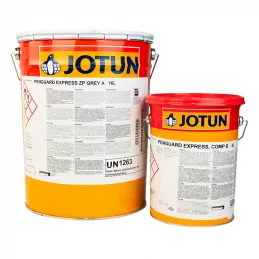
Jotun Penguard Express ZP
A two component amine cured epoxy coating that is a fast drying, zinc phosphate pigmented, high solids, high build product. Specially designed for new construction where fast dry to handle and over coating times are required. Can be used as a primer, mid coat, finish coat or as a single coat system in atmospheric environments.
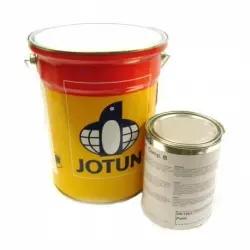
Jotun Penguard Express
Jotun Penguard Express is a two component amine cured epoxy coating that is fast drying, high solids and high build. It is specially designed for new construction where fast dry to handle and over coating times are required. Can be used as a primer, mid coat, finish coat or as a single coat system in atmospheric environments.
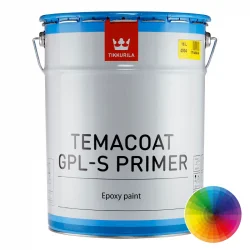
Tikkurila Temacoat GPL-S Primer
Tikkurila Temacoat GPL-S Primer is a two-component, polyamide-cured high build epoxy primer containing zinc phosphate. Excellent adhesion to steel, zinc and aluminium surfaces. Used as a primer or an intermediate coat in paint systems exposed to abrasion and chemical stress. Can be overcoated after a prolonged period of time. Faster...
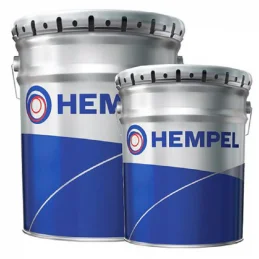
Hempel Hempadur 15553
Hempadur 15553 is a two-component epoxy paint that cures to a flexible, well adhering coating with good abrasion and impact resistance. For systems on hot dipped galvanized, aluminium, steel and stainless steel surfaces in moderately to severely corrosive environments, also suited when roughening of the surface is not possible EC-type...
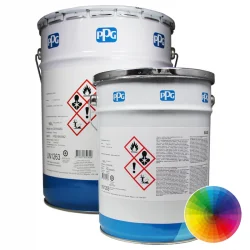
PPG SigmaFast 278
PPG SigmaFast 278, formerly known as Amercoat 278, a two-component, high solids, zinc phosphate epoxy primer and buildcoat in protective coating systems with excellent corrosion resistance in atmospheric exposure. Cures at temperatures down to -5°C (23°F) and can be overcoated with various two-pack epoxy and polyurethane coatings after 2...

PPG SigmaCover 256
PPG SigmaCover 256 is a two component, high-build, polyamide-cured recoatable zinc phosphate epoxy primer. General-purpose epoxy primer or buildcoat in protective coating systems, for steel and concrete structures in atmospheric exposure. Suitable for atmospheric industrial and marine applications. Can be recoated with various...
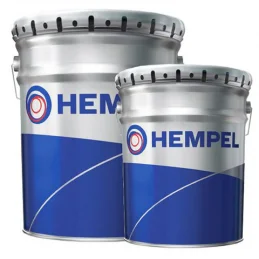
Hempel Hempadur 1555E
Hempadur 1555E is a two-component polyamide adduct-cured epoxy paint. It cures to a flexible, well adhering coating with good abrasion and impact resistance. Contains zinc phosphate. Recommended use as a general purpose primer for Hempatex, Hempadur and Hempathane systems on steel. May also be used as primer for hot dipped galvanized...
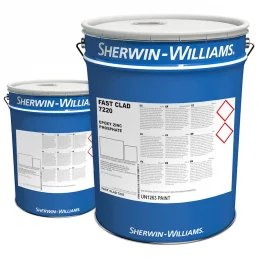
Sherwin-Williams Fast Clad 7220
Sherwin-Williams Fast Clad 7220 is a two component, fast-drying, phenalkylated zinc phosphate epoxy primer used as a multi-functional low temperature curing coating for the protection of carbon steel. For Industrial Use Only Specified for use as a primer for structural steel on blast cleaned steel for internal and external environments...
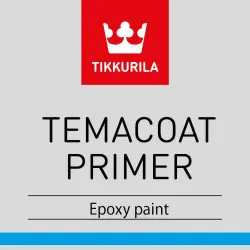
Tikkurila Temacoat Primer
A two-component resin modified epoxy paint containing anti-corrosive pigments that can be applied at sub-zero temperatures as a primer or an intermediate coat on surfaces exposed to climatic, mechanical and chemical stress. Recommended for building frameworks, tubular bridges, conveyors and other steelwork and equipment Adheres well to...
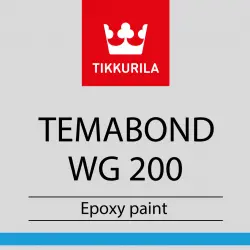
Tikkurila Temabond WG 200
Tikkurila Temabond WG 200 is two-component, low temperature curing, aluminium pigmented high-solids modified epoxy metal paint. Good chemical, solvent and abrasion resistance, due to the aluminium pigments Especially used as a primer for steel surfaces difficult to clean in process and chemical industry and in water immersion Excellent...
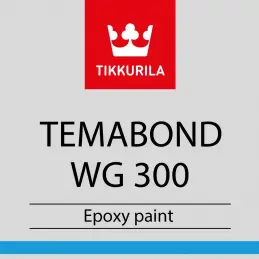
Tikkurila Temabond WG 300
Temabond WG300, a two-component, low temperature curing modified epoxy paint. Forms a tight coat with good chemical and abrasion resistance Good adhesion also to wire-brushed steel Recommended for repairing of damages caused by transport or installation and for repainting and touch-up painting of earlier painted surfaces Can also be...
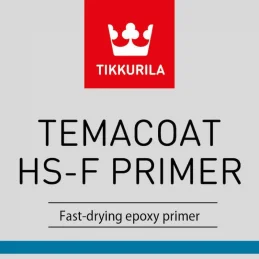
Tikkurila Temacoat HS-F Primer
Tikkurila Temacoat HS-F Primer is a universal epoxy primer that offers good adhesion and excellent protection against climatic, mechanical or chemical stress on a range of metal surfaces. Recommended for building frameworks, bridges, conveyors and other steelwork and equipment. All-seasons product (-10°C up to 40°C) Short overcoating time...
Need Help?
Need Help?
Low-temperature primers for metal have become a critical solution in environments where conventional primers struggle to perform due to colder climates. While standard primers require warmer temperatures to bond and cure effectively, low-temperature primers are formulated to be applied at much lower ambient temperatures, some even as cold as -5°C. This ability makes them invaluable in various industries, particularly in settings where metal surfaces must be protected without waiting for warmer weather.
Designed for both ferrous and non-ferrous metals, these primers provide high levels of corrosion resistance and adhesion, ensuring that metal substrates are protected from the elements, even in challenging conditions. Whether used in outdoor industrial sites, marine environments, or during winter months in construction, these specialist primers ensure that metal surfaces remain protected, preventing long-term damage caused by rust, corrosion, or exposure to harsh elements.
Features and Benefits of Low-Temperature Primers
One of the standout qualities of low-temperature primers is their versatility in adverse conditions. They are essential in situations where painting or treating metal at standard temperatures is either impractical or impossible. A deeper understanding of the key features and benefits these products offer reveals why they are such a reliable choice in various industries.
Superior Adhesion
Low-temperature primers are formulated to ensure excellent adhesion to a range of metal surfaces, even when applied in cold environments. The modified resins in these primers chemically bond to the substrate, forming a durable and long-lasting layer. This bond remains resilient despite the challenges posed by lower temperatures, providing consistent performance across a variety of metals, including steel, aluminium, and galvanised surfaces.
Corrosion Resistance
One of the most significant benefits of these primers is their ability to protect metal from corrosion. In industries where exposure to moisture, chemicals, and salty environments is common, preventing rust and corrosion is crucial for the longevity of the metal. These primers offer excellent resistance to such conditions, creating a protective barrier that prevents the onset of corrosion even in damp, salty, or chemical-laden environments.
Fast Drying Times
Despite being applied in cold temperatures, many low-temperature primers have fast-drying properties, which accelerates project timelines and reduces downtime. Fast curing is critical in industrial and construction applications where time is often of the essence, allowing teams to move forward with subsequent coats or construction work quickly.
Compatibility with Topcoats
Low-temperature primers are generally compatible with a wide range of topcoats, making them an excellent first step in a multi-layer coating system. Whether the metal surface requires an epoxy, polyurethane, or alkyd finish, these primers serve as a solid foundation, improving the bond of subsequent layers and enhancing the overall performance of the coating system.
Durability in Harsh Conditions
Durability is another key feature, as these primers are designed to withstand harsh environmental conditions. Once cured, they provide robust protection against UV radiation, impact, abrasion, and weathering, making them ideal for long-term protection in exposed outdoor applications.
Extended Working Windows
These primers extend the painting season, enabling application in environments where temperatures would traditionally halt projects. This flexibility is particularly advantageous in regions where cold seasons last for several months, and work schedules cannot afford lengthy delays. By allowing work to continue despite unfavourable weather, low-temperature primers help to keep projects on track.
Common Uses and Industries of Low-Temperature Primers for Metal
Low-temperature primers for metal are versatile coatings that provide exceptional performance in a variety of applications and industries where cold temperatures would otherwise hinder the curing process. These primers are especially beneficial in environments where conventional primers would fail to adhere, leading to corrosion or damage to the metal substrate.
Their widespread use spans across multiple industries, including construction, marine, oil and gas, manufacturing, and transportation, where metal surfaces are constantly exposed to challenging conditions. Below are some of the most common uses of low-temperature primers and the industries in which they are essential.
Steel Framework in Cold Climates (Construction)
One of the most common applications of low-temperature primers is in the protection of steel frameworks used in construction projects. In colder regions, structural steel requires a protective coating to prevent corrosion during the assembly and construction phases, particularly when temperatures drop below 5°C. Traditional primers often fail in these conditions, as they need higher ambient temperatures to cure effectively.
Low-temperature primers ensure that construction projects can continue regardless of the weather. They are frequently applied to steel beams, columns, and support structures used in building bridges, commercial buildings, and industrial facilities. The primers also provide a durable foundation for topcoats, further enhancing the longevity of the steel. In some cases, these primers are used as standalone protective layers until the warmer months, when additional coatings can be applied.
For example, during the construction of high-rise buildings or stadiums, where metal is exposed to snow, ice, and cold winds, low-temperature primers ensure that the metal surfaces remain protected from rust and weathering, even when the work continues throughout winter. Their fast-drying properties allow construction teams to stay on schedule without waiting for temperatures to rise.
Pipelines and Storage Tanks (Oil and Gas)
The oil and gas industry relies heavily on metal pipelines, storage tanks, and other infrastructure that require protection from corrosion, particularly when exposed to harsh outdoor conditions. Low-temperature primers play a crucial role in safeguarding this infrastructure in cold environments, where traditional primers may not adhere or cure properly.
Pipelines that transport oil, gas, or chemicals are often subjected to significant temperature fluctuations, especially in regions like Alaska, Siberia, or Northern Canada. These pipelines are vulnerable to corrosion, which can lead to costly leaks and environmental hazards. By using low-temperature primers, companies can apply protective coatings to pipelines even during winter months, preventing corrosion and extending the lifespan of the infrastructure.
Similarly, storage tanks used to hold crude oil, natural gas, or other liquids are frequently exposed to the elements in remote or offshore locations. In these cases, low-temperature primers ensure that the tanks remain rust-free, protecting their structural integrity and preventing contamination of their contents.
Ships, Docks, and Offshore Platforms (Marine)
In the marine industry, low-temperature primers are essential for protecting metal structures that are constantly exposed to moisture, salt, and extreme weather conditions. Ships, docks, and offshore platforms rely on these primers to provide a protective layer against corrosion in environments where saltwater and cold air can rapidly degrade unprotected metal.
Offshore platforms, which are used for oil drilling and production, are often located in harsh climates, where cold winds, ice, and saltwater continuously assault the metal surfaces. Low-temperature primers provide the necessary corrosion resistance to these metal structures, ensuring that they remain operational and structurally sound. These primers can be applied during winter months or in regions with consistently cold weather, without compromising on adhesion or protection.
Ships also benefit from the use of low-temperature primers, particularly in the winter or when they operate in colder waters. The hulls of ships, for example, are exposed to both fresh and saltwater, making them highly susceptible to corrosion. Applying a low-temperature primer helps protect the metal surfaces, ensuring that ships remain seaworthy and reducing the need for frequent maintenance and repairs. This is especially important for vessels that operate in the Arctic, Antarctic, or northern Atlantic regions.
Docks and marine structures, such as piers and bulkheads, are continuously exposed to water and cold air. Low-temperature primers protect these structures from rust and corrosion, extending their service life and preventing costly repairs.
Heavy Machinery and Equipment (Industrial and Manufacturing)
In industrial and manufacturing settings, heavy machinery and equipment often feature metal components that require protection from rust and wear. These machines are often used outdoors or in large facilities where temperature control is difficult, making them susceptible to corrosion, particularly during cold months.
Low-temperature primers are frequently applied to machinery such as cranes, excavators, conveyor belts, and metal fabricating equipment to prevent rust and degradation. By applying these primers, manufacturers can ensure that their machinery remains operational even in cold climates, minimising downtime for repairs. Fast-drying primers also allow for quick touch-ups or repairs, ensuring that machinery can be put back into service without delay.
For example, a steel foundry operating in a region with cold winters would benefit from using low-temperature primers to coat its equipment. As temperatures drop, the metal components of machinery can start to corrode if left unprotected, leading to costly repairs and extended downtime. Applying a primer in these conditions ensures that the equipment continues to function efficiently, without the need for expensive replacements.
Bridges and Infrastructure (Transportation and Infrastructure)
Bridges and other forms of transportation infrastructure rely heavily on metal components that must withstand constant exposure to the elements. Whether they are exposed to freezing rain, snow, or ice, these structures require reliable protection to ensure their longevity and safety. Low-temperature primers are widely used to protect these metal surfaces from corrosion during construction and throughout their service life.
Bridges in colder climates, such as those in Canada, Scandinavia, and northern parts of the UK, are regularly exposed to freezing temperatures, making it difficult to apply traditional primers during the winter months. Low-temperature primers, however, can be applied year-round, providing the corrosion resistance necessary to protect the metal from rust and structural degradation.
For example, the steel beams and support structures of a bridge in Scotland are regularly exposed to rain, snow, and salt used for de-icing roads. If left unprotected, these metal components could corrode, compromising the structural integrity of the bridge. A low-temperature primer ensures that the steel is protected, even when applied in cold conditions, preventing long-term damage and ensuring the safety of the bridge.
Railways also benefit from the use of low-temperature primers, particularly in regions with extreme cold weather. Metal tracks, switches, and other components are subject to corrosion and wear, and applying a low-temperature primer during maintenance can extend their lifespan. This is especially important for railways that operate in mountainous or northern regions, where temperatures frequently drop below freezing.
Storage and Transport Containers (Logistics)
The logistics industry relies on metal storage and transport containers to safely move goods across long distances. These containers, often made of steel, are exposed to fluctuating weather conditions, including cold temperatures, which can lead to corrosion if not properly protected.
Low-temperature primers are used to coat the exterior and interior of these containers, providing a protective barrier that prevents rust and damage from the elements. This is particularly important for containers used in refrigerated transport or those moving goods in regions with cold climates. The primer ensures that the metal remains intact, safeguarding the contents and extending the life of the container.
For example, a shipping container used to transport goods across the North Atlantic may be exposed to saltwater, freezing rain, and cold winds during the journey. Without adequate protection, the metal could corrode, leading to structural weakness and the potential for leaks. By applying a low-temperature primer, the container remains rust-free, ensuring that it can be reused for future shipments.
Agriculture and Farming Equipment
In the agricultural sector, metal equipment such as tractors, ploughs, and silos are frequently used in outdoor environments, making them vulnerable to corrosion caused by moisture and cold weather. Low-temperature primers are essential for protecting this equipment, especially during the colder months when traditional coatings may not cure properly.
Farmers use low-temperature primers to coat their machinery and metal structures, ensuring that they remain in good condition throughout the year. This protection is especially valuable for equipment that is stored outdoors during the winter, as it prevents rust and extends the operational life of the machinery. For example, a farmer in Scotland may use a low-temperature primer to coat their tractor and plough before storing them for the winter, ensuring that they remain rust-free and ready for use in the spring.
Airports and Airfields
Airports and airfields are another key area where low-temperature primers are utilised. The metal components of airport structures, such as hangars, runways, and terminals, are exposed to cold air, moisture, and de-icing chemicals during the winter months. Low-temperature primers provide the necessary corrosion protection to ensure that these structures remain operational and safe.
Airports in colder regions, such as those in Canada, Russia, and Scandinavia, rely on low-temperature primers to protect their metal surfaces from the harsh winter conditions. For example, the metal frames of airport hangars must remain rust-free to ensure the safety of the aircraft stored inside. A low-temperature primer ensures that the metal is protected, even when exposed to freezing temperatures and moisture.
For further guidance or to determine the best primer for a specific project, contact technical support to ensure product compatibility.
Frequently Asked Questions (FAQs)
- Can low-temperature primers be applied in wet conditions?
While low-temperature primers are designed for cold environments, it’s best to avoid applying them directly in wet or damp conditions. The substrate should be dry to ensure optimal adhesion. Always follow the product-specific guidelines for the best results. - What temperatures are considered too low for standard primers?
Most standard primers require temperatures of at least 10°C to cure properly. Low-temperature primers, however, are formulated to work in environments as cold as -5°C, making them the ideal choice for winter projects or cold storage facilities. - Are these primers suitable for non-metal surfaces?
Low-temperature primers are specifically designed for metal surfaces. For non-metal substrates, a primer formulated for the material in question should be used. Always consult the product specifications to ensure compatibility. - Do I need special equipment to apply low-temperature primers?
No special equipment is required to apply low-temperature primers, although standard tools such as brushes, rollers, and spray equipment can be used. It is, however, important to ensure the correct application techniques for colder conditions. - How long do these primers take to dry?
Drying times for low-temperature primers vary depending on the specific product and ambient temperature. Typically, they offer faster drying times than standard primers, even in cold conditions, but it’s best to check the product’s technical data sheet for precise timings.
